
Last Updated: December 24th, 2025
New South Wales
1946 - 1984
Weroona was established at Woodford by the Child Welfare Department in 1946. It opened as temporary accommodation for preschool-aged children in 1946. From 1948 it housed 30 boys, aged from 7 to 15 years of age. Most of the residents could not get foster placements because of a shortage of foster homes for their age group. Weroona was destroyed in the December 1957 Blue Mountains bushfires and was rebuilt and reopened in March 1959. By the 1980s Weroona housed teenaged boys, aged 13 to 18. It closed in 1984. Weroona opened as temporary accommodation for preschool-aged children in 1946. From 1948 it housed 30 boys, aged from seven to 15 years of age. Most of the residents could not get foster placements because of a shortage of foster homes for their age group. Weroona was destroyed by bushfire in November 1957, which temporarily increased accommodation pressure at many other children’s homes. A replacement building was opened by the Minister for Child Welfare on 7 March 1959, acc

Last Updated: December 23rd, 2025
Northern Territory
1949 - current
The Canossian Daughters of Charity is a Catholic order founded in Italy in 1808. They first came to Australian in 1949, and arrived in Darwin in 1970 with the purpose of establishing a residential children’s home – Bakhita Village. They ran the children’s home from 1972 until late December 1974, when it was destroyed by Cyclone Tracy. The Canossian Daughters of Charity continue to operate in Australia and internationally.

Last Updated: December 23rd, 2025
Victoria
1998 - current
Child and Family Services Ballarat (Cafs) came into being in 1998. Previously, it was known as Ballarat Children’s Homes and Family Services. Cafs is a community service organisation that provides a range of programs and services to children, young people and families. The heritage of the organisation dates back to 1865, when the Ballarat District Orphan Asylum was established, amid great concern for the children affected by the rapid social changes of the gold rush era. The Heritage Centre of Child and Family Services Ballarat was established in July 2000, when it was known as the Heritage Support Service. The Heritage Centre was formed to better meet requests for personal information made by past residents of the Orphanage and Children’s Homes, and to provide support for those who chose to seek such information about their childhood and heritage. For many past residents, it is often a highly emotional experience, which may also be a part of a personal journey about identity, belon

Last Updated: December 23rd, 2025
Six years ago today, the Australian Parliament issued an apology to Forgotten Australians and Former Child Migrants. Six years is a long time – in Canberra alone, so much has changed since that day in November, 2009. Read More…

Last Updated: December 23rd, 2025
In 2008, then Australian Prime Minister Kevin Rudd delivered an apology to the Stolen Generations. Many thought that this would be a momentous step toward reconciliation and a fresh start for Aboriginal Australians. Read More…

Last Updated: December 23rd, 2025
New South Wales
This is a photograph showing a group including 13 children, seven young women, and Alice Kitchen in front of St Chrisopher’s Home, Young. This photograph is undated. The date included is an estimate.

Last Updated: December 23rd, 2025
Western Australia
1898 - 1908
Files – Chief Protector of Aborigines is a record series created by the office of the Chief Protector of Aborigines and held at the State Records Office of Western Australia. It contains correspondence received by the Chief Protector of Aborigines on a range of matters, including the management of and admission of children to missions and other institutions, births, deaths, and marriages, police matters, provision of relief and rationing, medical treatment, employment and movement of Aboriginal people, and communication on various topics with the Aborigines Protection Board. Many of the items in this series are titled with the names of the individuals or families that they relate to. Access Items in this series are open access. For access to these records please contact the State Records Office of Western Australia. Records The below document contains a list of items in this series that may be of relevance to Care Leavers. The items are arranged by the Home/Instit

Last Updated: December 23rd, 2025
Download a PDF version of the Find & Connect Image policy (147kb PDF). Objective Scope Rationale Policy Feedback, takedown and complaints Appendices Review due by: June 30, 2018 Version: 2.0 Policy Steward: Find & Connect web resource Program Manager Approved on: January 30, 2017 Effective date: January 30, 2017 Policy Approver: Program Operational and Research Team (PORT) Status: Published Objective The Find & Connect web resource aims to facilitate access to r

Last Updated: December 23rd, 2025
Download a PDF version of the Find & Connect Language Policy (137kb PDF). Objective Scope Rationale Policy Feedback, takedown and complaints Appendices Review due by: June 30, 2018 Version: 1.0 Policy Steward: Find & Connect web resource Program Manager Approved on: August 11, 2017 Effective date: August 11, 2017 Policy Approver: Program Operational and Research Team (PORT) Status: Published Objective The Find & Connect web resource aims to facilitate ac

Last Updated: December 23rd, 2025
The first children’s Home in the Colony of New South Wales (and, by extension, the first in mainland Australia) was the Norfolk Island Orphan School (1795-1814). This home for orphaned girls, or those ‘deserted’ by their parents was opened in 1795 by the Lieutenant-Governor of Norfolk Island, Philip Gidley King. The history of the Norfolk Island Home is the starting point for the history of children’s institutions in Australia.Read More…

Last Updated: December 23rd, 2025
Western Australia
‘South Perth Community Hospital site, c.1950’ is an image from the Picture South Perth Photograph Collection held in the City of South Perth’s online collection of historical images. As the sign in the image says, it shows the site of the South Perth Community Centre Inc hospital on South Terrace.
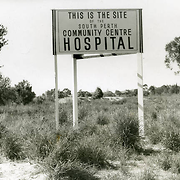
Last Updated: December 23rd, 2025
New South Wales
c. 2000 - current
Child and Adolescent Specialist Programs and Accommodation (CASPA) was the name chosen by the North Coast Children’s Home Inc in 2000. In 2013 CASPA, which was linked with Anglicare, provided residential and outreach programmes for children and young people in out-of-home care, foster care, disability care and mental health. By the early twentieth century the North Coast Children’s Home was changing its purpose and young people in its care found the name stigmatising and asked if it could be changed. According to CASPA’s website, the name CASPA was inspired by the cartoon character Casper the friendly ghost.

Last Updated: December 23rd, 2025
Victoria
The black and white card shows Nazareth house in Ballarat. A high fence is in the front of the building, a tower is the most prominent point in the middle of the picture and there are two trees in front of the fence nearest the street. The name is in white along the nature strip.
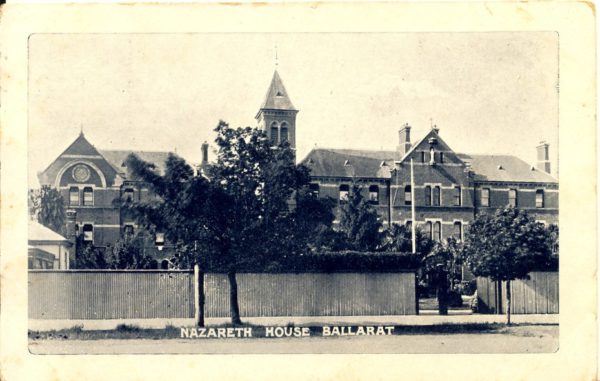
Last Updated: December 23rd, 2025
South Australia
1945 - current
The Adelaide Catholic Archdiocesan Archives holds records created by the successive bishops and archbishops of Adelaide and their associated parishes, diocesan offices and agencies. The Archives holds administrative, historical and photographic records related to Homes run by the Catholic Church. It also holds all issues of The Southern Cross newspaper, 1889 to present. No personal records are held by the Archives. All personal records of former residents of Catholic Homes are held by the Professional Standards Records Service of the Catholic Church. Access Conditions The Adelaide Catholic Archdiocesan Archives is open to the public from 9.30 to 4.30 Monday to Friday, but access to the Archives is by appointment only. Students and researchers may be allowed access to the Archives after applying in writing to the Archivist, requesting permission to view documents. They must state clearly the nature and purpose of their research. Applications can be made on the form, ‘Applicat

Last Updated: December 23rd, 2025
Tasmania
This is an image of the convent and chaplain’s quarters at St. Joseph’s Child Centre in Taroona. It was published in a section of Taroona 1808-1986: Farm Lands to a Garden Suburb titled “St. Joseph’s Family Support Centre”.
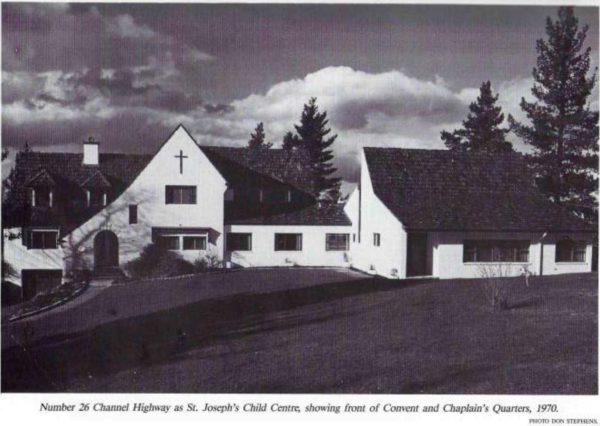
Last Updated: December 23rd, 2025
Tasmania
2008 - current
Uniting Care Tasmania, which formed in 2008, is an agency of the Victorian and Tasmanian Synod of the Uniting Church. It provides services to families and communities as well as acting as an advocate for social justice. In 2013, the Hobart Benevolent Society, which assists people in poverty, and Cerebral Palsy Tasmania are a part of Uniting Care. Uniting Care has had a presence in Tasmania for about 20 years in the form of the Family Resource Centre in Patterson Street, Launceston, emergency relief in Bridgewater and Gagebrook, which are northern suburbs of Hobart, and Scots Child Care Centre, Hobart.

Last Updated: December 23rd, 2025
South Australia
Please contact the Professional Standards Office Records Service of the Catholic Church: Postal Address: Catholic Diocesan Centre, 39 Wakefield Street, Adelaide SA 5000 Phone: (08) 8210 8275 or 1800 139 020 Email: receptionprofstandards@adelaide.catholic.org.au Website: https://adelaide.catholic.org.au/our-people/integrity-and-safeguarding/integrity-and-professional-standards-team

Last Updated: December 22nd, 2025
Western Australia
1902 - 1979
The Home of the Good Shepherd, Leederville was established in 1902 in Perth by the Sisters of the Good Shepherd for ‘unfortunate’ women and girls. The Home supported itself by operating a commercial laundry In 1904 the institution moved to Leederville to a purpose built property which included an industrial laundry. At the time of the move to Leederville, there were 50 children already living at the institution. In 1906, the number of people living in the Home were over 100, with girls as young as 14 years old. The Home of the Good Shepherd Industrial School for Girls opened in June 1909 in buildings alongside the existing home. The Home of the Good Shepherd Industrial School for Girls was a reformatory that was regulated by the State Children Act 1907. Its foundation stone was laid on 7 February 1909. Both Homes were run by the Sisters of the Good Shepherd. Girls were sent to the reformatory by the Children’s Court and their term could extend until they were 21 years o
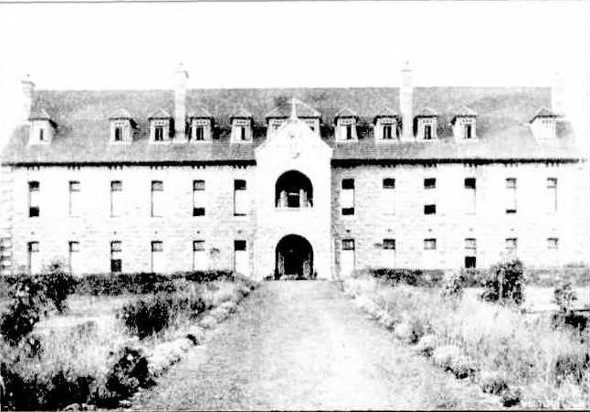
Last Updated: December 22nd, 2025
Victoria
1863 - 1974
The Convent of the Good Shepherd at Abbotsford was established by the Sisters of the Good Shepherd in 1863. A number of different institutions operated on the site at Abbotsford on the banks of the Yarra River, including an industrial school, reformatory, orphanage, female asylum and school. In 1961, it was designated by the department as a Youth Training Centre. In the early 1970s, the Sisters converted the dormitory accommodation into separate small units. By 1974, the Youth Training Centre had closed and residential accommodation for girls and young women had ceased at Abbotsford. The Convent of the Good Shepherd at Abbotsford was established by the Sisters of the Good Shepherd in 1863. It was the first institution established by the Sisters in Australia – four Irish women travelled from France and landed at Port Melbourne on 24 June 1863, and purchased the property on the banks of the Yarra River at Abbotsford. A number of different institutions operated on the site at Abbotsfor
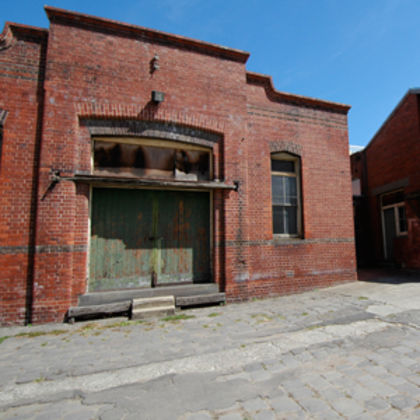
Last Updated: December 22nd, 2025
New South Wales
1913 - 1969
The Home of the Good Shepherd was a convent and industrial school that was opened by the Sisters of the Good Shepherd in 1913. It was located in Victoria Street, Ashfield and cared for women and girls, mainly referred from the courts but sometimes placed voluntarily by families or guardians. The records of the Home of the Good Shepherd are held by the Good Shepherd Archives in Abbotsford, Victoria. The Home of the Good Shepherd closed in 1969. In 1933, The Australian Women’s Weekly described the Convent of the Good Shepherd as offering a home ‘to girls and women who want to rest and reform’. According to historian Peter Quinn, this home was one of the few non-government institutions to receive funding from the NSW state government to run juvenile justice institutions. Like many religious organisations, this home supported itself with a commercial laundry, worked by the residents. According to research done by the staff of the Northern Territory Department of Health, the
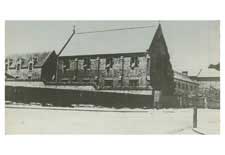
Last Updated: December 22nd, 2025
South Australia
c. 1997 - current
The Professional Standards Office Records Service of the Catholic Church manages the provision of access to records for former residents of Catholic Residential Facilities. Access Conditions Please contact the Professional Standards Office for an application form and information regarding procedures and conditions with regard to accessing information from records held by this office. The Professional Standards Office does not charge any fees to former residents of Catholic Homes seeking their records.
